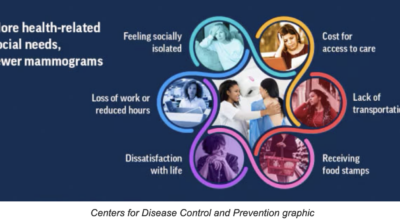The Pet Corner: Checking for lumps and bumps
Published 10:10 am Wednesday, September 19, 2018

- Dr. Jeff Castle
There happen to be countless types of lumps and bumps that can occur on or under dog’s skin.
Cats don’t usually have many lumps or bumps. Pet owners often describe the masses I am referring to as bumps, humps, moles, warts or tumors.
There are even more proper medical names used to describe these masses such as papilloma, sebaceous cysts, numerous types of neoplasia or cancer and numerous types of non-neoplastic tumors.
What should you do about the lumps and bumps on your pet? If you have read any of my columns in the past, then you know the answer. If your pet has any kind of mass, lump or bump, then you should have it examined by your veterinarian.
Some pet owners will worry needlessly about a mass on their pet because they are afraid to have it checked because of their denial tendency. Other pet owners may not worry quite enough because they assume everything is fine thinking, “I’m sure it is nothing to worry about.”
There are many masses pets get which are easy for your veterinarian to diagnose by visually examining your pet. Many more masses cannot be diagnosed by looking at it.
Certain characteristics of a mass will often allow your veterinarian to make recommendations about treatment options which may include multiple variables affecting your decision of how to treat.
Many types of masses may not require any treatment if it can be determined not to be cancerous. Regardless, any mass found on your pet should be monitored closely for any changes.
Changes in size, shape, color or density are all potential warning signs suggesting some type of treatment should begin.
There are hundreds of different kinds of cancer. Cancer is a disorder of cell growth. The abnormal growth of these cells usually results in a mass of tissue, or tumor. However, not all tumors are considered to be cancer.
Cancer is also known as malignant neoplasia. Other non-neoplastic tumors are referred to as benign. Oncology is the study of neoplasia.
The causes of cancer are similar to the causes of cancer in people. Genetics play a major role in the susceptibility of certain pets to cancer. Some breeds have a greater tendency to develop cancer.
Like people, most cancer patients are older pets, but on occasion a young pet may have cancer. Environmental factors that cause cancer called carcinogens may be involved. Such factors include sunlight, chemicals, secondhand smoke and some infections.
The most common and most obvious symptom of cancer is when an actual tumor develops. Other symptoms of cancer can be weight loss, anorexia, lethargy, vomiting and diarrhea, especially internal cancer that is not outwardly obvious. There are numerous diagnostic tests which can be useful in determining if your pet may have cancer.
If there is an actual tumor present, there are a couple of ways to test it for cancer.
First, your veterinarian could perform a fine needle aspirate. This test involves inserting a needle into the tumor while trying to suck out some material that would be placed on a microscope slide and sent out to a lab.
A pathologist would examine the slide by looking under a microscope at the different kinds of cells in the material. If there are cancer cells present then a definitive diagnosis can be made.
Sometimes the pathologist may report there was not enough material aspirated to make a diagnosis. In this case, a full biopsy is recommended.
A biopsy is when your veterinarian performs surgery to cut out a piece of the tumor and then sent it to a pathologist for examination. Often times, it is more beneficial to surgically remove the entire tumor and send it to the lab so a second surgery can be avoided if the biopsy came back as cancer.
If I suspect cancer, I recommend having surgery to remove the entire tumor with the hopes of getting all of the cancer cells and then the tumor can still be tested.
The report may come back as non-cancerous, but I think it is better to err on the side of caution.
There are treatment options for most types of cancer. The most common and effective treatment is surgical removal of a tumor. Even if the type of cancer is not surgically curable, chemotherapy or radiation may be performed after surgery or instead of surgery.
A lot of people do not realize chemotherapy and radiation are available for pets. Certain types of cancer respond well to these treatment options.
Certain kinds of cancer, though, are impossible to treat effectively.
If your pet has any lumps or bumps, see your veterinarian as soon as possible to ensure your pet lives a very long, healthy and happy life.
Dr. Jeff Castle is a veterinarian at Clark County Veterinary Clinic.





